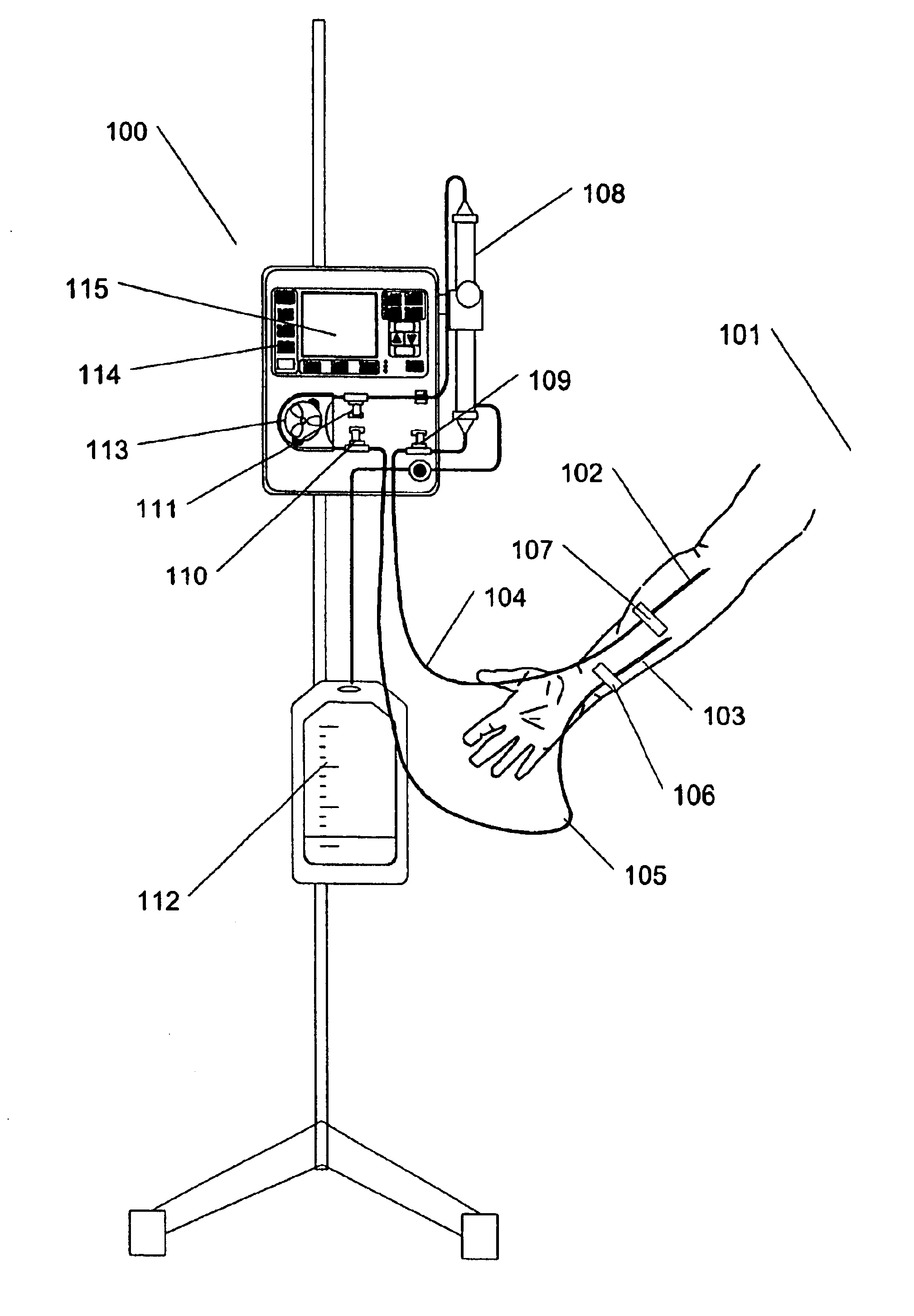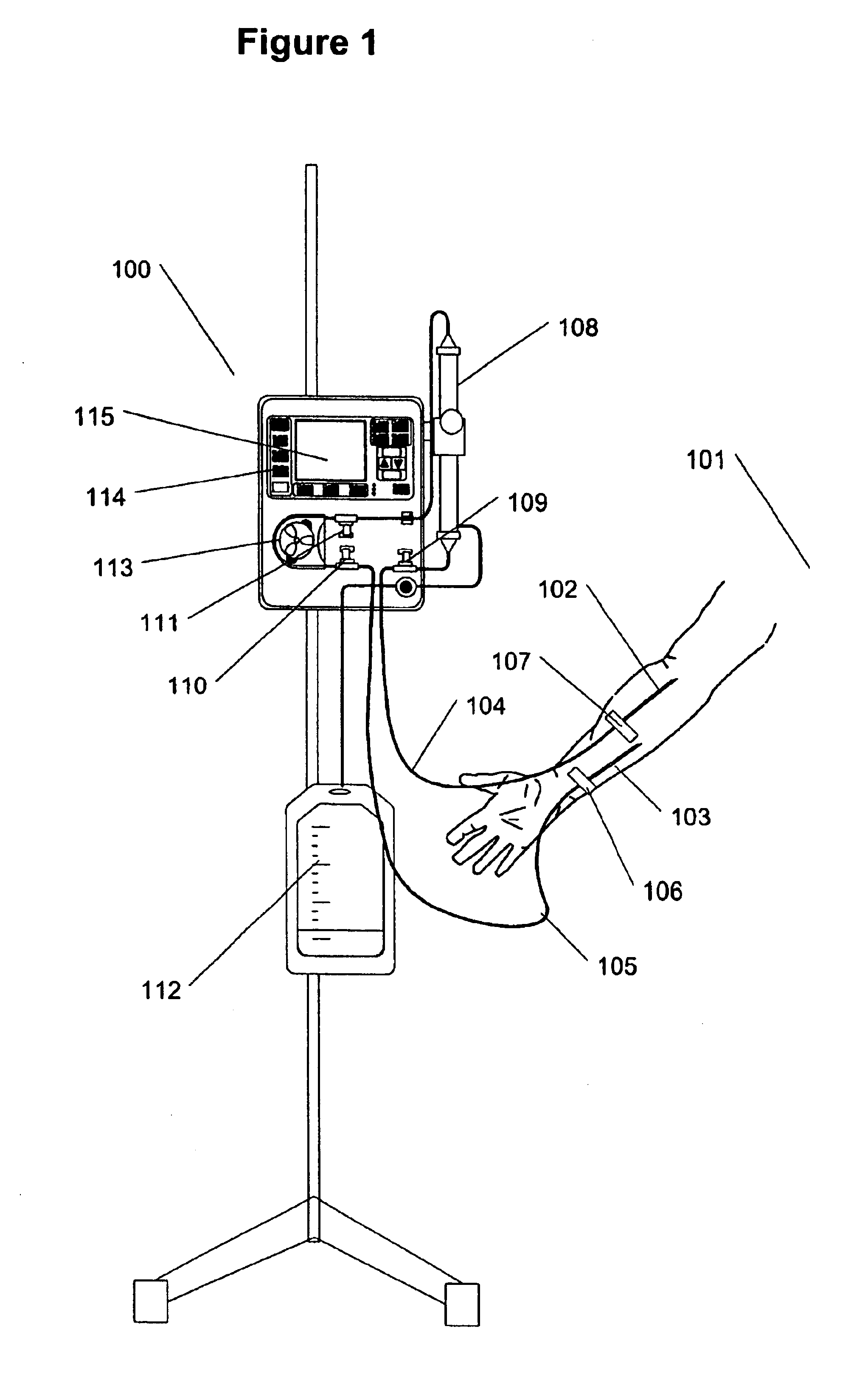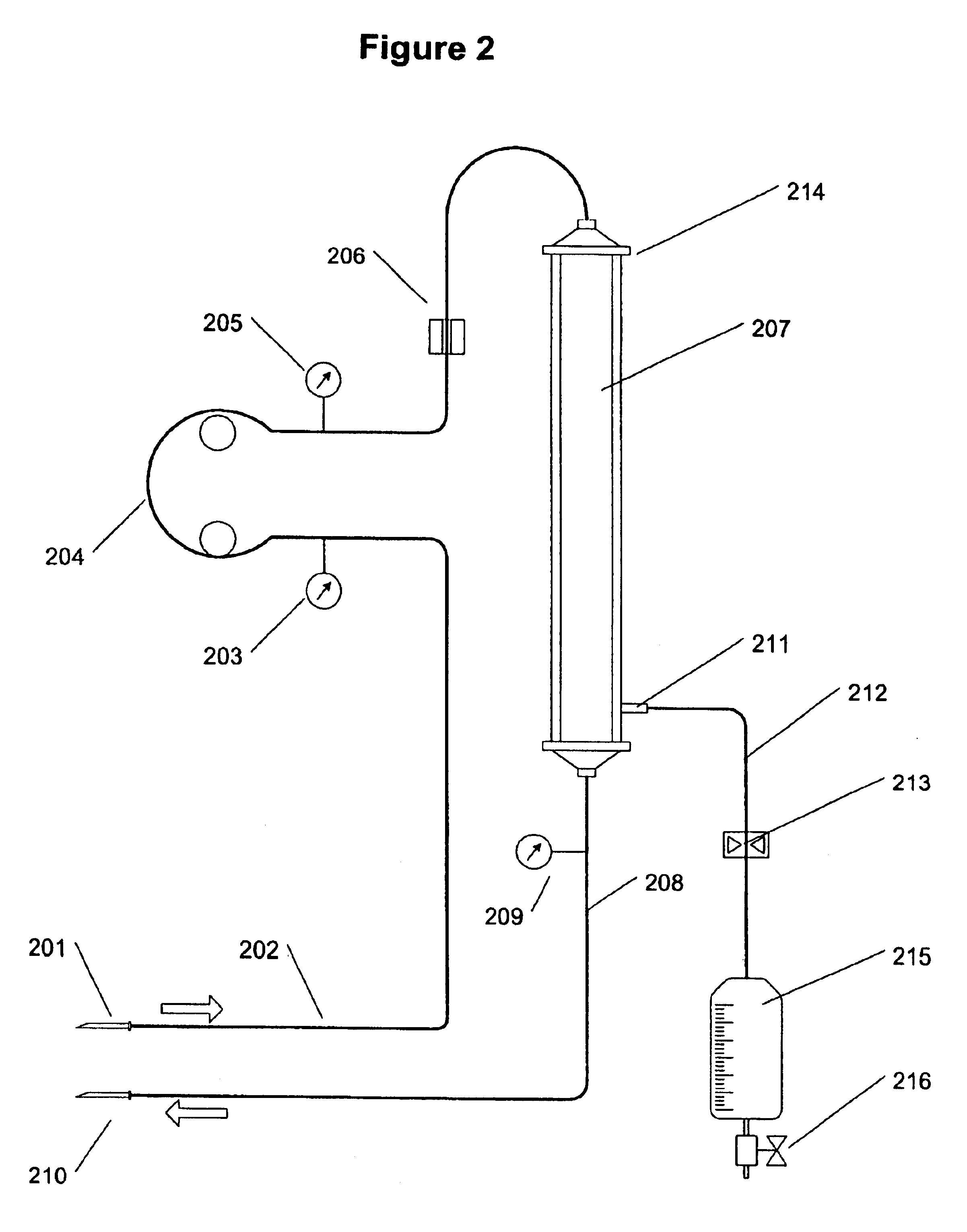Method and apparatus for vein fluid removal in heart failure
a vein and fluid extraction technology, applied in the field of congestive heart failure treatment methods and equipment, can solve the problems that the device requiring central access to venous blood was generally not used, and achieve the effects of reducing chf symptoms, simple excess fluid extraction (safe), and widespread clinical us
- Summary
- Abstract
- Description
- Claims
- Application Information
AI Technical Summary
Benefits of technology
Problems solved by technology
Method used
Image
Examples
Embodiment Construction
[0085]For the proposed clinical use, the capability of the invention is to remove water drove the design. This is fortunate since the convection technique proposed here for removal of water is inefficient (in terms of the solute material removed per unit of the surface area of the membrane) in removing solute from the blood plasma. The functional kidneys of the patient are relied on to remove solutes from the plasma. The kidneys are, thus, relived of having to perform substantially all fluid removal from the blood.
[0086]FIG. 1 illustrates the treatment of a fluid overloaded patient with the present invention 100. Patient 101 can undergo treatment while in bed or sitting in a chair. Patient can be conscious or asleep. To initiate treatment two relatively standard 18G needles 102 and 103 are introduced into suitable peripheral veins (on the same or different arms) for the withdrawal and return of the blood. This procedure is no different from blood draw or IV therapy. Needles and atta...
PUM
| Property | Measurement | Unit |
|---|---|---|
| Length | aaaaa | aaaaa |
| Fraction | aaaaa | aaaaa |
| Fraction | aaaaa | aaaaa |
Abstract
Description
Claims
Application Information
 Login to View More
Login to View More - R&D
- Intellectual Property
- Life Sciences
- Materials
- Tech Scout
- Unparalleled Data Quality
- Higher Quality Content
- 60% Fewer Hallucinations
Browse by: Latest US Patents, China's latest patents, Technical Efficacy Thesaurus, Application Domain, Technology Topic, Popular Technical Reports.
© 2025 PatSnap. All rights reserved.Legal|Privacy policy|Modern Slavery Act Transparency Statement|Sitemap|About US| Contact US: help@patsnap.com



